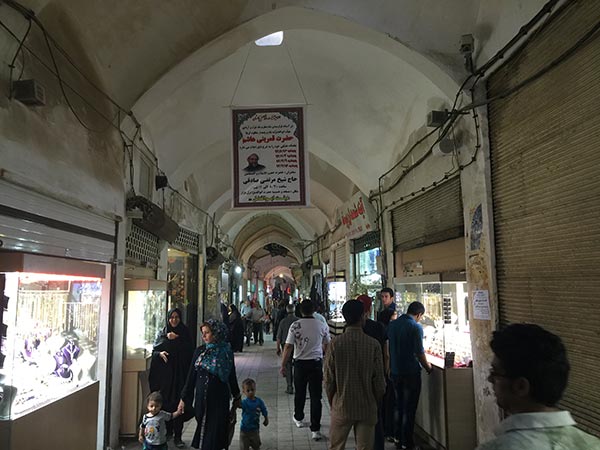 |
|
A local bazaar. [Photo by Tan Yingzi/China Daily]
|
A sunset walking tour in the maze-like alleys of the old town is highly recommended, and have no fear of getting lost: The friendly locals are bound to show you the way out.
The next stop on our tour was Shiraz, perhaps best known as having lent its name to the red grape used in making wine. For us though, the outstanding color here was pink, that of the Nasir ol Molk Mosque, popularly known as the Pink Mosque. In fact, on its own this superb edifice must be one of the biggest attractions for tourists in Iran, so ubiquitous is its image in travel brochures.
However, there is much more to Shiraz than wine and stunning architecture. The city, with a population of 1.4 million, is regarded as one of the oldest cities in ancient Persia, known for its poets, literature, flowers and-shopping centers.
After seven days visiting mosques, bazaars and gardens, we decided to see a modern shopping mall here, the Persian GulfComplex. Located to the north of the city, it looks just like any other shopping mall in China, or probably anywhere else in the world, with numerous shops, a huge car park, a supermarket, a cinema and a food hall. We happily made our biggest purchase, of local delicacies, at the supermarket.
Our last stop was Isfahan, the third largest-city in the country, and which is given even more gilded credentials in a Persian proverb that says "Isfahan is half of the world". That harks back to the 17th century when the city was the capital of Persia, one of the world's biggest cities and one of its most beautiful.
Today it is graced by splendid tree-lined boulevards, and at its center is sprawling Naghsh-e Jahan Square, at 89,600 square meters one of the world's largest squares, and which is on the UNESCO World Heritage List.


























 Raymond Zhou:
Raymond Zhou: Pauline D Loh:
Pauline D Loh: Hot Pot
Hot Pot Eco China
Eco China China Dream
China Dream China Face
China Face






